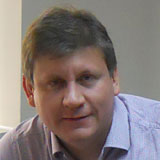 César Carbajal
César CarbajalCargo / Position: Gerente de Asuntos Sociales / Social Affairs Manager
Empresa / Company: MWH Perú
Titulo Presentación / Presentation title: PERÚ: Crecimiento minero y oposición social / PERU: Mining Growth and Social Opposition
Resumen / Abstract:
Despite its rich historic tradition in mining, Peru just positioned itself in the global mining map in the nineties. The growth of mining investments accompanied the economic reforms that opened the Peruvian economy to the world thus making mining the spearhead that has led this wave of investment that have tripled the GDP of Peru in the last 11 years. The immense deposits of copper, zinc, silver, gold and on a smaller scale iron in the Peruvian Andes became mega-projects each larger than the previous one and that today generate about US$ 26 billion in exports (about 55 % of Peru´s total exports).
This growth has not been without setbacks, social opposition to mining projects has been growing almost on a par with the growth of the mining industry in the country. The future looks even more challenging because the projects to be developed are located in places that are more and more socially sensitive and with a population increasingly organized and aware about the developments.
Peru mining development is based on the promotion of private capital, mostly from abroad, that brings the large initial capital investment and technology and know-how in managing mega-projects, in turn Government legitimizes this development through the granting, approval and control of increasingly stringent –and questioned- environmental permits. When serious social conflicts have arisen, adjustments have been made to the process and most projects have continued their advance. The model has been reactive to local development options but has served to bring a first wave of mega-investments that has transformed the country from a financial pariah in 1990 to receiver of large investments a few years later. Today, Peru is facing a new wave of investment that the Ministry of Energy and Mines of Peru estimated at more than US$ 53 billion over the next five years (several times the amount of investments during 1990-2010), these are investments in places more environmentally and socially sensitive than the previous period, and expose the limitations of Peru's present mining model opening the debate on how to restructure the new model of mining development in the country.
We share some lessons from our experience with the existing model and guidelines for the new mining model needed in a historically and traditionally mining country that could also be useful for countries with high potential such as Argentina.
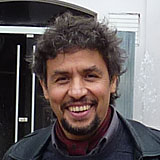 Daniel Gonzalo Jerez
Daniel Gonzalo JerezCargo / Position: Docente Profesor de Geología Minera UNLaR.
Empresa / Company: Consultor independiente
Titulo Presentación / Presentation title: Sin Título
Resumen / Abstract:
Tax regime on mining in Argentina has special features that do not stimulate investment when compared to the international context. This is mainly due to two characteristics, the total tax burden in relative terms and the regressivity of the structure.
This paper presents the results of taxation in a theoretical project, its effects on income distribution between the state and mining company.
Different scenarios are analyzed pre-tax profits and the impact on project development, investment, resource use. Finally it is analyzed the impact of an alternative structure to remove regressive taxation.
 Dr Gregor Partington
Dr Gregor PartingtonCargo / Position: Managing Director
Empresa / Company: Kenex
Titulo Presentación / Presentation title: Developing New Wind Energy and Mining Opportunities in Argentina Using Spatial Data Modelling Techniques.
Resumen / Abstract:
Kenex in partnership with Emprendimientos Energéticos y Desarrollos S.A. (EEDSA) have recently completed a number of strategic business development projects in Argentina to develop wind energy and mineral resources.
EEDSA are wind industry professionals who have been involved in the renewable energy market in Latin America since the formative years of the sector. EEDSA has participated in numerous projects through the provision of advice and sector investment. Their experience comes from involvement in projects and developments in Chile, Argentina, Uruguay, Mexico, Brazil, Costa Rica & the Caribbean. EEDSA's in depth knowledge of the sector and expert practitioners enable them to develop appropriate strategies for project development appropriate for regions or countries.
Kenex in 2010 commenced a partnership with EEDSA to explore for and develop wind energy opportunities in Argentina using Kenex’s recently developed wind prospecting techniques. These techniques were developed by Kenex in New Zealand to explore for wind energy resources at regional and local scales by using new satellite derived meteorological and terrain data in combination with spatial data modelling techniques. These techniques have been successfully used to map wind farm locations in New Zealand and rand each site according to it’s economic potential. After a year of data collection and modelling, which has successfully mapped potential wind farm sites in a number of provinces in Argentina, the joint venture decided to use Kenex’s experience in mineral exploration to map potential mineral exploration opportunities for gold, copper, base-metals and uranium at a regional scale in Argentina and Chile.
Regional scale prospectivity models were developed for Argentina and Chile to identify areas of porphyry Cu-Au and epithermal gold silver mineralisation. Weights of evidence modelling techniques were used to determine spatial correlations between porphyry Cu-Au and epithermal Au-Ag mines and predictive maps created from available spatial data in Argentina. These predictive maps are based on parameters identified from the currently accepted mineralisation models as being critical to the ore forming process. These predictive maps have then been combined into a final prospectivity map. The models have successfully identified areas of known porphyry and epithermal mineralisation as prospective and have also identified areas where new mineralised systems could be discovered with further exploration.
The regional targeting work for both wind energy resources and minerals has now been completed and the partnership is in the process of developing a number of business opportunities that have been identified by this work where more detailed prospect scale targetring work will be completed.
This presentation describe the techniques used in both mineral and wind energy spatial data modelling and highlight the potential for the development of new wind and mineral opportunities in Argentina.
 Cr. Carlos Clément
Cr. Carlos ClémentCargo / Position: Director Comercial e I+D
Empresa / Company: Clément Comercio Exterior
Titulo Presentación / Presentation title: Inversiones mineras: claves del comercio exterior
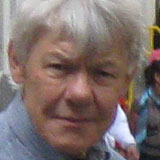 Jan Boon
Jan BoonCargo / Position: Científico Emérito/Estudiante de Ph. D.
Empresa / Company: Ministerio de Recursos Naturales de Canadá/ Universidad Carleton
Titulo Presentación / Presentation title: El Enfoque de Mansfield Minera a la Responsabilidad Social Empresarial
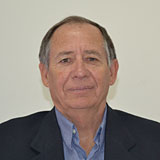 Eduardo Machuca
Eduardo MachucaCargo / Position: Responsable Relaciones Institucionales
Empresa / Company: Troy Resources Argentina Ltd.
Titulo Presentación / Presentation title: La RSE en la pequeña minería metalífera
 Richard Seville
Richard SevilleCargo / Position: CEO OROCOBRE LTD.
Empresa / Company: Orocobre Ltd.
Titulo Presentación / Presentation title: El mercado del litio
 Juan Carlos Rayo Prieto
Juan Carlos Rayo PrietoCargo / Position: Presidente
Empresa / Company: JRI Argentina S.A.
Titulo Presentación / Presentation title: COMPARACIÓN DE GRANDES PROYECTOS MINEROS ARGENTINA VERSUS CHILE / PERÚ
 Oscar A. Pedersen
Oscar A. PedersenCargo / Position: Geólogo de Proyecto
Empresa / Company: Mirasol Argentina SRL
Titulo Presentación / Presentation title: Nuevo descubrimiento de plata en el Macizo del Deseado, Santa Cruz: Proyecto Virginia
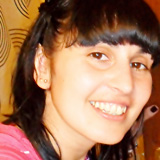 Mercedes Virginia Barros
Mercedes Virginia BarrosCargo / Position: Geologa Junior
Empresa / Company: Mirasol Argentina SRL
Titulo Presentación / Presentation title: Nuevo descubrimiento de plata en el Macizo del Deseado, Santa Cruz.
 Hans von Michaelis
Hans von MichaelisCargo / Position: President
Empresa / Company: Randol International Ltd.
Titulo Presentación / Presentation title: The Randol Gold Model and the 2012 Macro-Economic Outlook for the Gold Mining Industry
 Lic. Jorge Pablo Kesting – Geol. Carolina Pereyra
Lic. Jorge Pablo Kesting – Geol. Carolina PereyraCargo / Position: Kesting: Vicepresidente de Mansfield Minera SA / Pereyra: Geologa de Proyecto
Empresa / Company: Mansfield Minera SA
Titulo Presentación / Presentation title: Actualización de los avances en el Proyecto Lindero-Arizaro (etapa de Factibilidad) / Lindero-Arizaro Project up Date (facibility stage)
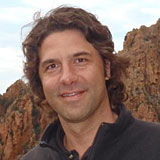 Diego Guido
Diego GuidoCargo / Position: Senior Technical Advisor
Empresa / Company: Argentex Mining Corp.
Titulo Presentación / Presentation title: Avances en el conocimiento de la geología y mineralizaciones del Macizo del Deseado, Santa Cruz
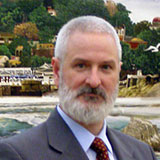 Guillermo Eduardo Re Kühl
Guillermo Eduardo Re KühlCargo / Position: Presidente / President
Empresa / Company: Alto Americas S.A.
 Normand Champigny
Normand ChampignyCargo / Position: President / Presidente
Empresa / Company: Donner Metals Ltd.
Titulo Presentación / Presentation title:
1. Tools for the mining sector / Herramientas para el sector minero
2. Exploration worldwide and in Latin America / Exploración a nivel mundial y en Latinoamérica
Resumen / Abstract:
1. Success in mineral exploration relies increasingly on the sound application of leading Corporate Social Responsibility (CSR) practices at the earliest possible stage of exploration. To facilitate the adoption of such practices by exploration companies, the Prospectors & Developers Association of Canada (PDAC) developed and is promoting the implementation of e3 Plus - A framework for responsible exploration in order to help exploration companies continuously improve their social, environmental and health and safety performance and to comprehensively integrate these three aspects in all their exploration programs. It is a voluntary guideline designed to help inform explorers in their decision-making while engaged in exploration projects around the world. e3 Plus provides the means for members to reduce social and environmental risk to their projects, to benefit local communities and to enable companies to become world leaders in CSR performance. The intended audience for e3 Plus includes: the exploration sector, local communities, government organizations, non-governmental organizations, civil society, academia or any interested party. The first phase of e3 Plus includes principles, guidance and three internet-based toolkits covering the areas of social responsibility, environmental stewardship and health and safety. In addition the PDAC has designed a toolkit on preventing conflict in exploration and has published a Safety Pocket Guide for field use.
2. During the last decade due largely to a major rise in commodity prices, the level of mineral exploration worldwide has increased considerably including most jurisdictions in Latin America. Mineral exploration has become globally competitive and faces new and shifting challenges. But as the risks increase, so does the potential reward. Countries aware of mineral exploration challenges and willing to foster the exploration industry with supportive policies will reap tremendous benefits. Three key challenges that will grow in importance for explorers are:
protect and improve access to land, maintain and improve access to capital and implement leading CSR processes and guidelines.
 Guillermo Luis Almandoz
Guillermo Luis AlmandozCargo / Position: Gerente de Proyecto
Empresa / Company: Corriente Argentina – Lumina Copper Ltda.
Titulo Presentación / Presentation title: Proyecto Taca Taca – Pórfido de Cobre-Oro-Molibdeno, Provincia de Salta, Argentina
Taca Taca Project – Copper-gold-molibdenum porphyry, Salta province, Argentina
Resumen / Abstract:
The Taca Taca project is located in Salta province, Argentina. In May 2012, Lumina Copper Ltda. upgraded its indicated and inferred resources to 20,5 billions of pounds of copper, 5,5 million ounces of gold and 603 million pounds of molybdenum, these resources are contained in a mineral deposit of 1,7 billion tonnes . Taca Taca is typical Cu-Au-Mo porphyry of Oligocene age. Most of the mineralization at the project is hosted in the Early Paleozoic igneous intrusions, which is composed by hypogene chalcopyrite>bornite mineralization and chalcocite-covelite in supergene mineralization. Three dominant alteration types are recognized: potassic, phyllic and propylitic. Early potassic and propylitic alterations are overprinted by phyllic alteration and both of these are affected by the later supergene alteration. Phyllic is the most significant alteration in the project. It overprints much of the earlier phases over the 3.5 x 2 km surface exposure of the system. This phyllic phase was divided in two distinct sericite types; first, a green variety replacing feldspars and biotite, associated at an intermediate-sulphidation chalcopyrite ± bornite assemblage mineralization and a later, lower-temperature white form which is related with high-sulphidation pyrite-bornite-digenite-chalcocite mineralization.
 Carlos Saravia Frias
Carlos Saravia FriasCargo / Position: Presidente CADEU
Empresa / Company: Cámara Argentina de Empresas de Uranio
Titulo Presentación / Presentation title: El Uranio Post-Fukushima
Resumen / Abstract:
Since the last Argentina Mining, in March 2011 an incredible geological event – a devastating tsunami – caused incalculable suffering and damage to the people of Japan. It also provoked what is now generally known as the “Fukushima” crisis and required damage control at the nuclear power plants. Global reaction sparked a wave of nuclear safety reviews and major investment in uranium exploration generally stalled. Over time, some countries opted to eliminate nuclear from their energy matrix while others reconfirmed their commitment to nuclear. In the meantime, Argentina continued to advance with construction of its third nuclear energy facility and saw an evolution in the public discourse on mining. In this changed global and national context, what are the opportunities and challenges facing uranium exploration projects in a country which still imports all its uranium requirements?
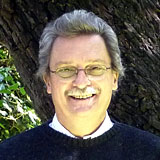 Luis Alberto Cavanna
Luis Alberto CavannaCargo / Position: Gerente Regional de Medio Ambiente para América Latina y el Caribe
Empresa / Company: MWH
Titulo Presentación / Presentation title: 1. Estudio de Búsqueda de Especies de Interés para el Proyecto Cobre Panamá / Serching of Species of Concern for Cupper Panama Mining Project
- 2. Crecimiento Minero y Oposición Social / Mining Growth and Social opposition
 Rafael Eduardo Dahl
Rafael Eduardo DahlCargo / Position: President
Empresa / Company: Mining World SA
 José Antonio David
José Antonio DavidCargo / Position: Gerente - Sostenibilidad y Cambio Climático
Empresa / Company: Deloitte
Titulo Presentación / Presentation title: Estrategias de sostenibilidad para la industry miner / Sustainability strategies for the mining industry
Resumen / Abstract:
ln order to talk about sustainability strategies, we must first start by explaining what sustainability is and its relationship to social responsibility as a management model for an organization in the present. This will lead the way to explore some available frameworks at a global scale, which can help us guide and practice social responsibility Initiatives that must be consistent with the organization's business strategy in order to contribute to its competitiveness. Finally, we will provide an example of a proven technology in the mining sector, which is the result of how man can create the proper conditions for nature to do its job in equilibrium with the environment.
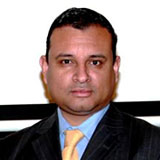 Samuel Valdes
Samuel ValdesCargo / Position: Gerente de Medio Ambiente / Environmental Manager
Empresa / Company: MWH Panamá S.A.
Titulo Presentación / Presentation title: Estudio de Búsqueda de Especies de Interés para el Proyecto Cobre Panamá / Searching of Species of Concern for the Copper Panama Mining Project
 José de Castro Alem
José de Castro AlemCargo / Position: Presidente
Empresa / Company: Sales de Jujuy S.A.
Titulo Presentación / Presentation title: Sin Título
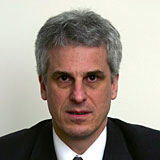 Gabriel R Macchiavello
Gabriel R MacchiavelloCargo / Position: Socio
Empresa / Company: Rattagan Macchiavello Arocena & Peña Robirosa
Titulo Presentación / Presentation title: Ley de Glaciares y su interpretation Jurisprudencial. The National Glacier Protection Law and its jurisprudential interpretation
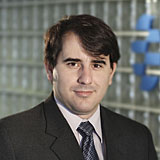 Lic. Fabrixio Pedrosa
Lic. Fabrixio PedrosaCargo / Position: Gerente Comercial
Empresa / Company: Clément Comercio Exterior
Titulo Presentación / Presentation title: Inversiones mineras: claves del comercio exterior
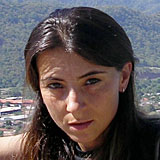 Cinzia Loi
Cinzia LoiCargo / Position: Jefe de Proyecto
Empresa / Company: Ausenco Vector
Titulo Presentación / Presentation title: Experiencias de Revegetación en áreas rehabilitadas de depósitos de estériles en Minera Alumbrera / Revegetation Experiences in rehabilitated areas of sterile deposits in Alumbrera Mine
Resumen / Abstract:
Sterile deposits represent, in the metal mining industry, the main source of acid drainage generation; therefore, the rehabilitation of these areas is a fundamental stage in the process of Mine Closure.
In “Bajo de la Alumbrera” Mine (Catamarca), rehabilitation of the sterile dumps is being carried out through the use of coverings made with mild material (Barren Core and Epidotoclorite) extracted during the exploitation phase of the mine, so as to isolate the sterile material and limit the direct contact with water and air, which constitute the main agents involved in the formation reactions of acid drain.
A vegetal covering in the rehabilitated areas is considered to form a further barrier against water percolation to the sterile material, and, at the same time, to allow making a landscape restoration, limiting the visual impact of the dumps.
The natural revegetation of the dumps is a very slow process because of the conditions of the growing substrate, being constituted by big rock elements, reason why it can be considered a soil per se. en February 2009, Ausenco Vector, together with Mendoza-CONICET, started an applied research project, with tendency to develop technologies which allow the acceleration of the establishment of a vegetal covering in these areas.
Through revegetation tests, with native plants of the area produced in greenhouses; in the covering of barren cores and epidotoclorite, the adaptability of the different vegetal species have been evaluated in relation with different combinations of treatments and types of coverings.
The results suggest that species such as Tessaria deodoneifolia, Cercidium praecox, Zuccagnia punctata, Senna rigida, Larrea divaricata present adaptations to survive and develop in these types of substrates. The species used showed different responses to the applied treatments. The high percentages of observed survival in some tests have allowed the definition of the most appropriate to begin with a progressive revegetation of the rehabilitated areas.